| XXXXXX |
XXXXXXXXXXXXXXXXXXXXXXXXXXXXXXXXXXXXXXXXXXXXXXXXXXXXXXXXXXXXXXXXXXXXXXX |
XXXXXX |
XXXXXX |
XXXXXX |
| |
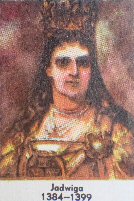
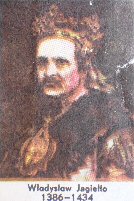
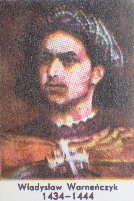
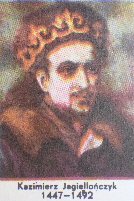
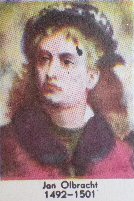 |
|
|
|
| |
The 15th century was a period of
profound transformation in Europe and beyond.
One of the most significant events was
the fall of Constantinople in
1453, marking the end of the Byzantine Empire. This event also
prompted European powers to seek new trade routes, eventually leading to
the Age of Exploration. In 1492,
Christopher Columbus embarked on his first voyage, discovering
the Americas.
The invention of the printing
press by Johannes Gutenberg around 1440 revolutionised the spread
of knowledge. This technological breakthrough facilitated the
dissemination of literature and scientific ideas.
The Hundred Years' War between
England and France concluded in 1453, reshaping the political
landscape. The War of the Roses
in England, a series of dynastic conflicts, ended in 1487 with the rise
of the Tudor dynasty.
The Renaissance, a cultural and intellectual movement, flourished during
this century, fostering advancements in art and humanism. Artists like
Leonardo da Vinci and
Michelangelo began their influential careers in this era.
In 1494, the Treaty of Tordesillas divided newly discovered lands
between Spain and Portugal. This agreement had lasting implications for
colonial expansion and global geopolitics.
The fall of Granada in 1492
ended Muslim rule in Spain, completing the Reconquista.
The Catholic Monarchs, Ferdinand
and Isabella, consolidated their power and sponsored exploration.
Scientific inquiry gained momentum with figures like
Nicolaus Copernicus, who later
challenged geocentric views.
The Ottoman Empire expanded significantly, becoming a dominant power in
Southeastern Europe and the Middle East.
Trade flourished through the
Hanseatic League, connecting cities across Northern Europe.
In literature, works such as
Thomas Malory's Le Morte d'Arthur captured medieval chivalric
ideals.
The 15th century set the stage for the modern age through these pivotal
events and cultural shifts. Its legacy continues to influence
contemporary society, politics, and culture. |
|
|
|
| 1400 |
|
|
|
|
| 1400 |
By 1400 the Norman-French and Anglo-Saxon language
merged, and was nationally spoken and was used in royal court and
Parliament.
w 1400 zm.
Geoffrey Chaucer author of
The Canterbury Tales, the
story of a pilgrimage to Canterbury. It is a collection of English
poems, from the fictional characters on the pilgrimage. The book was
printed by William Caxton,
who was the very first person in England to print using a printing
press. |
|
|
|
| 1401 |
|
|
|
|
| 1402 |
|
|
|
|
| 1403 |
|
|
|
|
| 1404 |
|
|
|
|
| 1405 |
|
|
|
|
| 1406 |
|
|
|
|
| 1407 |
|
|
|
|
| 1408 |
|
|
|
|
| 1409 |
|
|
|
|
| 1410 |
|
|
|
|
| 1411 |
|
|
|
|
| 1412 |
|
|
|
|
| 1413 |
|
|
|
|
| 1414 |
The Battle of Agincourt,
where the English defeated the French in
the Hundred Years War.
The English later left France, in the 1450s. |
|
|
|
| 1415 |
|
|
|
|
| 1416 |
|
|
|
|
| 1417 |
|
|
|
|
| 1418 |
|
|
|
|
| 1419 |
|
|
|
|
| 1420 |
|
|
|
|
| 1421 |
|
|
|
|
| 1422 |
|
|
|
|
| 1423 |
|
|
|
|
| 1424 |
|
|
|
|
| 1425 |
|
|
|
|
| 1426 |
|
|
|
|
| 1427 |
|
|
|
|
| 1428 |
|
|
|
|
| 1429 |
|
|
|
|
| 1430 |
|
|
|
|
| 1431 |
|
|
|
|
| 1432 |
|
|
|
|
| 1433 |
|
|
|
|
| 1434 |
|
|
|
|
| 1435 |
|
|
|
|
| 1436 |
|
|
|
|
| 1437 |
|
|
|
|
| 1438 |
|
|
|
|
| 1439 |
|
|
|
|
| 1440 |
|
|
|
|
| 1441 |
|
|
|
|
| 1442 |
|
|
|
|
| 1443 |
|
|
|
|
| 1444 |
|
|
|
|
| 1445 |
|
|
|
|
| 1446 |
|
|
|
|
| 1447 |
|
|
|
|
| 1448 |
|
|
|
|
| 1449 |
|
|
|
|
| 1450 |
|
|
|
|
| 1451 |
|
|
|
|
| 1452 |
|
|
|
|
| 1453 |
|
|
|
|
| 1454 |
|
|
|
|
| 1455 |
|
|
|
|
| 1456 |
|
|
|
|
| 1457 |
|
|
|
|
| 1458 |
|
|
|
|
| 1459 |
|
|
|
|
| 1460 |
|
|
|
|
| 1461 |
|
|
|
|
| 1462 |
|
|
|
|
| 1463 |
|
|
|
|
| 1464 |
|
|
|
|
| 1465 |
|
|
|
|
| 1466 |
|
|
|
|
| 1467 |
|
|
|
|
| 1468 |
|
|
|
|
| 1469 |
|
|
|
|
| 1470 |
|
|
|
|
| 1471 |
|
|
|
|
| 1472 |
|
|
|
|
| 1473 |
|
|
|
|
| 1474 |
|
|
|
|
| 1475 |
|
|
|
|
| 1476 |
|
|
|
|
| 1477 |
|
|
|
|
| 1478 |
|
|
|
|
| 1479 |
|
|
|
|
| 1480 |
|
|
|
|
| 1481 |
|
|
|
|
| 1482 |
|
|
|
|
| 1483 |
|
|
|
|
| 1484 |
|
|
|
|
| 1485 |
THE TUDORS Official end to
the Wars of the Roses at
the Battle of Bosworth Field.
Part 1. Edward IV of House of
York ur. 1442, zm. 1483 (white rose), defeats House of Lancaster
(red rose) and takes the throne.
Part 2. Edward dies, Richard
III of House of York takes the throne in 1483-1485 and is then
defeated by Henry Tudor,
from House of Lancaster. This marked 1485 year as the beginning of
the Tudor Dynasty.
Henry VII did his utmost
to ensure that there would be no repetition of the Wars of the Roses. In
order to ensure this, he took steps to reduce the power of noblemen in
England, and put more weight/authority behind the crown. He was the King
until 1509. |
|
|
|
| 1486 |
|
|
|
|
| 1487 |
|
|
|
|
| 1488 |
|
|
|
|
| 1489 |
|
|
|
|
| 1490 |
|
|
|
|
| 1491 |
|
|
|
|
| 1492 |
|
|
|
|
| 1493 |
|
|
|
|
| 1494 |
|
|
|
|
| 1495 |
|
|
|
|
| 1496 |
|
|
|
|
| 1497 |
|
|
|
|
| 1498 |
|
|
|
|
| 1499 |
|
|
|
|
| XXXXXX |
XXXXXXXXXXXXXXXXXXXXXXXXXXXXXXXXXXXXXXXXXXXXXXXXXXXXXXXXXXXXXXXXXXXXXXX |
XXXXXX |
XXXXXX |
XXXXXX |
| |
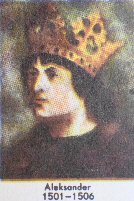
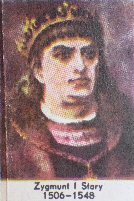
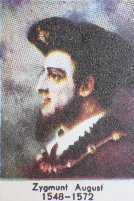
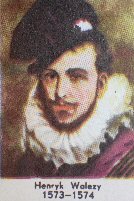
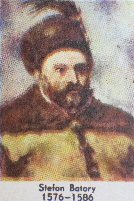 |
|
|
|
| |
The 16th century was a period of
profound transformation in European history.
One of the most significant events was the Protestant
Reformation initiated by Martin
Luther in 1517.
This movement challenged the authority of the Catholic Church and led to
religious fragmentation. Exploration also flourished, with figures like
Christopher Columbus
opening the Americas to European influence. The Spanish Empire expanded
rapidly, establishing colonies across the New World.
In England, the Tudor dynasty consolidated power, notably under
Henry VIII and Elizabeth I.
The Renaissance continued to inspire advancements in art, science, and
philosophy.
Nicolaus Copernicus
proposed the heliocentric model, revolutionising astronomy. The printing
press facilitated the spread of new ideas and knowledge. The Ottoman
Empire reached its zenith under
Suleiman the Magnificent. Religious wars, such as the French Wars
of Religion, caused widespread turmoil. The Council of Trent sought to
reform the Catholic Church and counter Protestantism. Trade routes
expanded, leading to increased cultural exchange and economic growth.
The Spanish Armada's defeat in
1588 marked a shift in naval supremacy. Literature flourished,
with writers like William
Shakespeare emerging during this era. Scientific inquiry gained
momentum, laying the groundwork for the Scientific Revolution.
Artistic techniques evolved, exemplified by the works of
Michelangelo and Raphael.
The 16th century also saw the rise of powerful monarchies centralising
state control.
Colonial exploitation and the
transatlantic slave trade began to shape global demographics.
Overall the century was characterised by dynamic change that set the
stage for the modern age. |
|
|
|
| 1500 |
|
|
|
|
| 1500 |
|
|
|
|
| 1501 |
|
|
|
|
| 1502 |
|
|
|
|
| 1503 |
|
|
|
|
| 1504 |
|
|
|
|
| 1505 |
|
|
|
|
| 1506 |
|
|
|
|
| 1507 |
|
|
|
|
| 1508 |
|
|
|
|
| 1509 |
Coronation of
Henry VIII Tudor ur. 1491, zm. 1547.
Catherine of Aragon
born 1485-1536. Henry's first wife was Catherine of Aragon.
Spanish born, she had a
number of children with Henry, but only one child survived. This was a
girl named Mary 1516-1558
- queen from 1553 after her brother Edward VI died. Henry divorce
Catherine once she became too old to have children. In contrast to
Edward, Mary was a Catholic. She became known as "Bloody Mary" after her
harsh treatment towards Protestants, 280 of whom were burned at the
stake. After a short reign, Mary died and Elizabeth I started to reign.
Anne Boleyn born
1501-1536. Next came Anne Boleyn. English born, Anne gave Henry another
daughter, Elizabeth (born
1533-1603, the queen since 1559 -
Elizabeth I. She didn't
had any children so the Tudor dynasty ended). Anne Boleyn at the end was
arrested on charges of adultery and incest (kazirodztwo) and was
executed at the Tower of
London.
Jane Seymour born
1508-1537. Jane Seymour was Henry's third wife. She provided Henry with
a son Edward, but died after giving birth.
Edward (born 1537-1553),
become the king Edward VI
after his father died in 1547. Edward was a devout Protestant, who
introduced the Book of Common Prayer to the
Church of England. Edward
died at the age of 15, after which his half-sister Mary became queen.
Anne of Cleves born
1515-1557. Henry's fourth wife was Anne of Cleves, a
German princes. Henry
married her purely for political reasons but quickly divorce her after
realising that he didn't find her attractive. Following the divorce,
Henry and Anne became great friends.
Catherine Howard,
English born 1523-1542. Catherine Howard was a cousin of Anne Boleyn,
and was very young when she married Henry on 28 July 1540 at the age of
17. Their marriage did not last long. Like Anne Boleyn, Catherine was
accused of adultery and executed.
Catherine Parr,
English born 1512-1548. Catherine Parr was Henry's final wife. She
outlived Henry, before marrying again, but
died shortly after. |
|
|
|
| 1510 |
|
|
|
|
| 1511 |
|
|
|
|
| 1512 |
|
|
|
|
| 1513 |
|
|
|
|
| 1514 |
|
|
|
|
| 1515 |
|
|
|
|
| 1516 |
|
|
|
|
| 1517 |
|
|
|
|
| 1518 |
|
|
|
|
| 1519 |
|
|
|
|
| 1520 |
|
|
|
|
| 1521 |
|
|
|
|
| 1522 |
|
|
|
|
| 1523 |
|
|
|
|
| 1524 |
|
|
|
|
| 1525 |
|
|
|
|
| 1526 |
|
|
|
|
| 1527 |
|
|
|
|
| 1528 |
|
|
|
|
| 1529 |
|
|
|
|
| 1530 |
|
|
|
|
| 1531 |
|
|
|
|
| 1532 |
|
|
|
|
| 1533 |
|
|
|
|
| 1534 |
|
|
|
|
| 1535 |
|
|
|
|
| 1536 |
In Henry VIII's Act of Union (the
act for the government of Wales) in 1536, Wales was legally
incorporated into England, with English as its sole official language.
The Bible was translated into Welsh by Bishop William Morgan in 1588. |
|
|
|
| 1537 |
|
|
|
|
| 1538 |
|
|
|
|
| 1539 |
|
|
|
|
| 1540 |
|
|
|
|
| 1541 |
|
|
|
|
| 1542 |
|
|
|
|
| 1543 |
Mary Stuart,
Queen of Scots born 1542 died 1587. Was made queen when she was
just 1 week old when her father died. She spent the majority of her
childhood in France, was a Catholic, and returned to a Protestant
Scotland. Forced to flee from Scotland she sought protection from her
cousin, Queen Elizabeth. Elizabeth, however, suspected Mary of trying to
take the English throne. So she was imprisoned for 20 years and then
executed for plotting to kill Elizabeth.
Before Mary flee to England, she put her Protestant son,
James VI, on the Throne.
When Elizabeth died in 1603, James VI become
King James I of England. |
|
|
|
| 1544 |
|
|
|
|
| 1545 |
|
|
|
|
| 1546 |
|
|
|
|
| 1547 |
Once Henry VIII died, his son
Edward VI took the
throne. |
|
|
|
| 1548 |
|
|
|
|
| 1549 |
|
|
|
|
| 1550 |
|
|
|
|
| 1551 |
|
|
|
|
| 1552 |
|
|
|
|
| 1553 |
King Edward VI died and
Mary I of England took
the throne. |
|
|
|
| 1554 |
|
|
|
|
| 1555 |
|
|
|
|
| 1556 |
|
|
|
|
| 1557 |
|
|
|
|
| 1558 |
|
|
|
|
| 1559 |
Mary I died and
Elizabeth I took the throne
The Elizabethan Religious
Settlement is the name given to the religious and political
arrangements made for England during the reign of Elizabeth I
(1558–1603). Implemented between 1559 and 1563, the settlement is
considered the end of the English Reformation, permanently shaping the
theology and liturgy of the Church of England and laying the foundations
of Anglicanism's unique identity. It required any public or church
office members to swear allegiance to the queen as the head of church
and state. Anyone who refused risked imprisonment or even execution. |
|
|
|
| 1560 |
|
|
|
|
| 1561 |
|
|
|
|
| 1562 |
|
|
|
|
| 1563 |
|
|
|
|
| 1564 |
William
Shakespeare (1564-1616) born in
Stratford-upon-Avon. The
language we speak today has been heavily influenced by Shakespeare, as
he invented a number of common used words and phrases. Most popular
plays include: 1. Romeo and Juliet, 2. King Lear, 3. Macbeth, 4.A
midsummer Night's Dream, 5. The Taming of the Shrew.
Shakespeare's plays were performed in
the Globe Theatre. Today,
there exists a modern copy of the Globe Theatre (in London) in which
re-enactments (wznowienia) are performed. |
|
|
|
| 1565 |
|
|
|
|
| 1566 |
|
|
|
|
| 1567 |
|
|
|
|
| 1568 |
|
|
|
|
| 1569 |
|
|
|
|
| 1570 |
|
|
|
|
| 1571 |
|
|
|
|
| 1572 |
|
|
|
|
| 1573 |
|
|
|
|
| 1574 |
|
|
|
|
| 1575 |
|
|
|
|
| 1576 |
|
|
|
|
| 1577 |
|
|
|
|
| 1578 |
|
|
|
|
| 1579 |
|
|
|
|
| 1580 |
|
|
|
|
| 1581 |
|
|
|
|
| 1582 |
|
|
|
|
| 1583 |
|
|
|
|
| 1584 |
|
|
|
|
| 1585 |
|
|
|
|
| 1586 |
|
|
|
|
| 1587 |
|
|
|
|
| 1588 |
The Spanish sent
an Armada (a large group of ships) to invade England and to
restore Catholicism. They were resoundingly (rozbrzmiewająco)
beaten by Sir Francis
Drake and Charles Howard, the commanders of the British fleet.
After this Britain expanded its geographic exploration. This led to the
development of new trade routes, and British trading with new colonies.
Sir Francis Drake led many of these expeditions. His ship,
The Golden Hind, was one
of the first to sail all the way round the world. During this period,
English settlers began to colonise the eastern coast of America. |
|
|
|
| 1589 |
|
|
|
|
| 1590 |
|
|
|
|
| 1591 |
|
|
|
|
| 1592 |
|
|
|
|
| 1593 |
|
|
|
|
| 1594 |
|
|
|
|
| 1595 |
|
|
|
|
| 1596 |
|
|
|
|
| 1597 |
|
|
|
|
| 1598 |
|
|
|
|
| 1599 |
|
|
|
|









